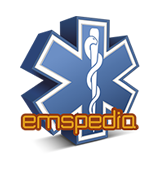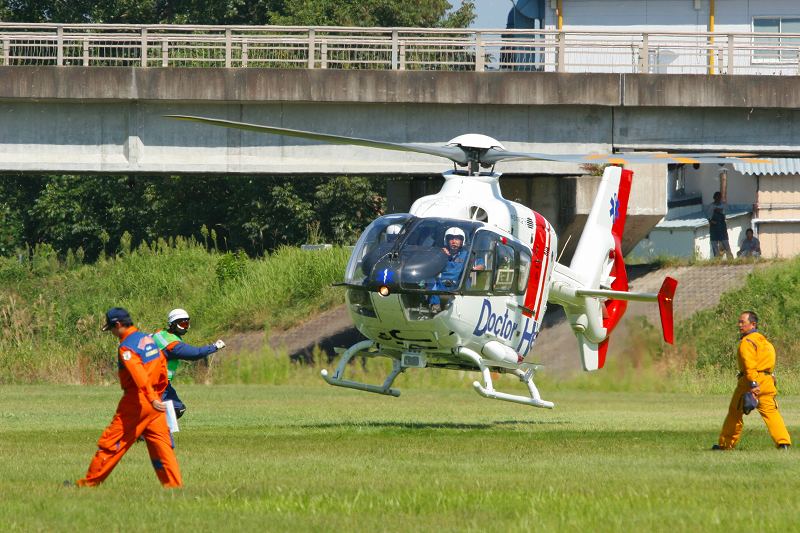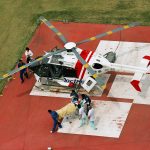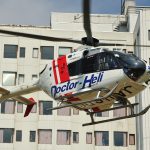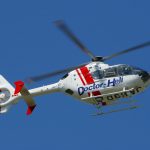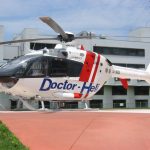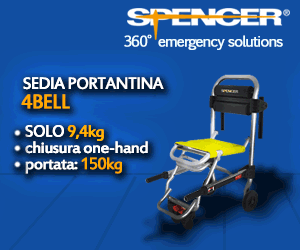The world of helicopters is a very fascinating field. Especially for rescue professionals and paramedics. This time we moved to the other side of the world, precisely in Japan, to understand how HEMS is organized and managed there.
We got in contact with Mr Yoshiki Morimoto the director of Nakanihon Air Service (Nakanihon Koku), located in Toyoyama, Nishikasugai District – Aichi Prefecture, Japan.
- What is Nakanihon Air Service and what is its importance in rescue missions setting?
“Nakanihon Air Service is one of the largest Japanese operators and its main business in a company involved in EMS, fire and anti-disaster helicopter missions, such as rescue. We are expert in the transportation of construction materials and electronic power line inspections.
We dispose of several helicopters: AS332L1, EC135, AS350B3, Bell412, Bell429and fixed-wings aircraft, such as Cessna C560.
In Japan, helicopters are not allowed to land outside authorized airports and heliports, so generally we need to have a specific authorization released by Japan Civil Aviation Bureau (JCAB), but for EMS we are allowed to land even outside, without prior permission application; the importance is to have the right place to land. Pilots must be very careful during the landing to ensure safety. This is a very exceptional case in Japanese Aerial law for HEMS.”
- How is the air ambulance service organized in Japan?
“In Japan, until the 2000s it was the Japan Self-Defense Forces or Fire and anti-disaster Helicopter to carry fly operations out. Since 2001, the Japanese government regulated Doctor-Heli programme managed by specific HEMS companies, like Nakanihon Air Service. Japan is composed of 47 prefectures, and 42 prefectures out of 47 have doctor helicopters. In total, there are 52 medical aircraft that operates on the entire island.
The Ministry of Health, Labour and Welfare and the local governments are the bodies which cover the cost of any air ambulance service for each case. Patients only pay their medical treatment.
Nakanihon Air Service covers 25% of a medical helicopter in service with EC135 and B429 aircraft.
Doctor helicopters are based in hospitals and they are dispatched from the same hospitals.
When emergencies occur, flight nurse and doctors get on board and they go reaching patients on sites. They start to provide medical service when they still are alive. The area where a specific doctor helicopter operates goes from 70 km to 150 km far from the hospital. Of course, the call of the emergency will reach the nearest hospital and it’s it that will dispatch the helicopter. In case the accident is too far for the regulation distance but no helicopters are available, also a far hospital can send its aircraft as well in part.
Nakanihon Air Service disposes of fixed wings Cessna 560 for wide-area operations. Doctor helicopters cannot carry out night operations, only under visual meteorological condition (VMC). They can fly only in daylight and only if weather conditions can allow it. On the other hand, Japan Self-Defense Forces or part of Fire and anti-disaster Helicopter provide 24h service and just in case they can carry out night missions. The hospital has also doctor cars, in case of bad weather conditions.”
- EC 135 – Copyright © Nakanihon Air Service Co.,Ltd.
- EC 135 – Copyright © Nakanihon Air Service Co.,Ltd.
- EC 135 – Copyright © Nakanihon Air Service Co.,Ltd.
- EC 135 – Copyright © Nakanihon Air Service Co.,Ltd.
- Who are the emergency operators onboard?
“Actually in addition to flight nurse and flight doctors, also maintenance mechanic staff are very important on board. They carry out navigation and assistance support, communication lead with the communication centre, they take care of radio-communication systems and also help flight nurses in case. They also provide maintenance before and after the flight. That’s why their presence is very essential onboard anytime. The crew onboard is generally composed of 1 flight nurse and 1 doctor because of the weight capacity of the aircraft. Anyway, it is possible that a helicopter hosts trainees, but the number of people cannot exceed 5 per aircraft. Helicopter EC135 have, for example, limited places to 4, patient included. However, the Helicopter operators do not care for crew training. It is a hospital’s matter.
Another important member is the pilot, of course. From this year, the Japanese Government changed the law for EMS helicopter pilots. From this year on, to be hired as HEMS pilots, contestants will need a fly experience of minimum 1000 flight hours as captain. As for Nakanihon Air Service, pilots must have experienced at least 1500 flight hours, and 1000 flight hours for captain pilots of which 50 hours on the same aircraft.”
- How do you choose to use a certain type of helicopter or another? Are there standards, according to the kind of emergency, the weather or the environment?
“Japanese Government’s basic 3 regulations:
- Twin-engine helicopters must respect TA category, because in case of an accident, if one of the engines cannot work, the other one has to be completely functioning and would put the helicopter in safety;
- Aircrafts must have 4 seats (without counting pilot and mechanic);
- Aircrafts should be equipped in a way without getting much influence of downwash
when the helicopter is landing.
Nakanihon Air Service tries to select aircraft which respect these regulations. We dispose of 18 doctor helicopters, like 15 Airbus EC135 and 3 Bell429s.”
- An example of a rescue mission on Japanese mountains: dangers for the air ambulance operators and patient? Standards to follow?
“For rescue operations, on mountains, for example, doctor helicopters cannot operate. In case of this sort of emergency, Fire and anti-disaster service helicopters are dispatched. Generally, doctors are on board to supervise the health condition of the injured patient.
In case of joint operation: the patient is picked up by the rescue helicopter and then transferred to a hospital, or they join doctor helicopter in other sites and doctor helicopter takes over the mission.”
- What is the most common type of emergency you generally have to deal up with?
“It depends on the prefecture. Car accidents are the most common anywhere. Other emergency urgent cases are cardiac arrest or physical change caused by a disease.”
- Which are the points you wish to improve and develop in your service in the future?
“Right now we communicate with wireless radio-communication with each department, but for medical communication, it will be progressively switched to digital communication in order to transfer the vital information, including electrocardiogram waveform.
There are not enough pilot training areas in Japan. This makes pilot training difficult. Nakanihon Air Service yet need to provide the training under such adverse conditions.
We need a small landing/take-off zone, that creates the same landing/take-off challenge at the scene for ab-initio pilots. However, most of the candidate areas (public school playground, city park, stadium, national park, riverbank, etc.) are owned/administered by local authorities. They set their own rules for their use.
Helicopter landing/take-off is not listed for use rules, so it takes so much time to get permission. This is a challenge to us.”
